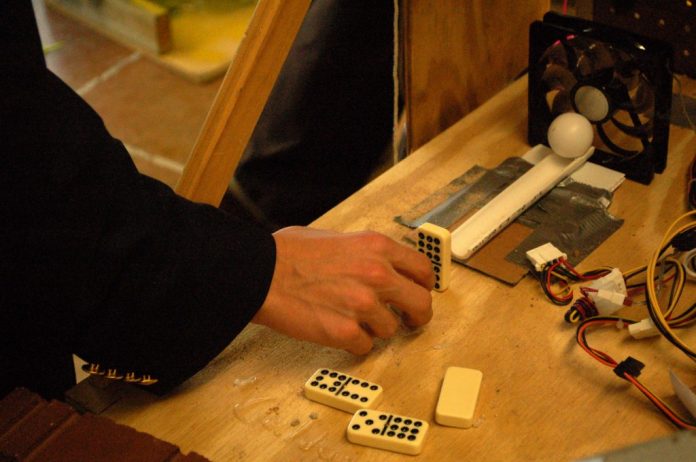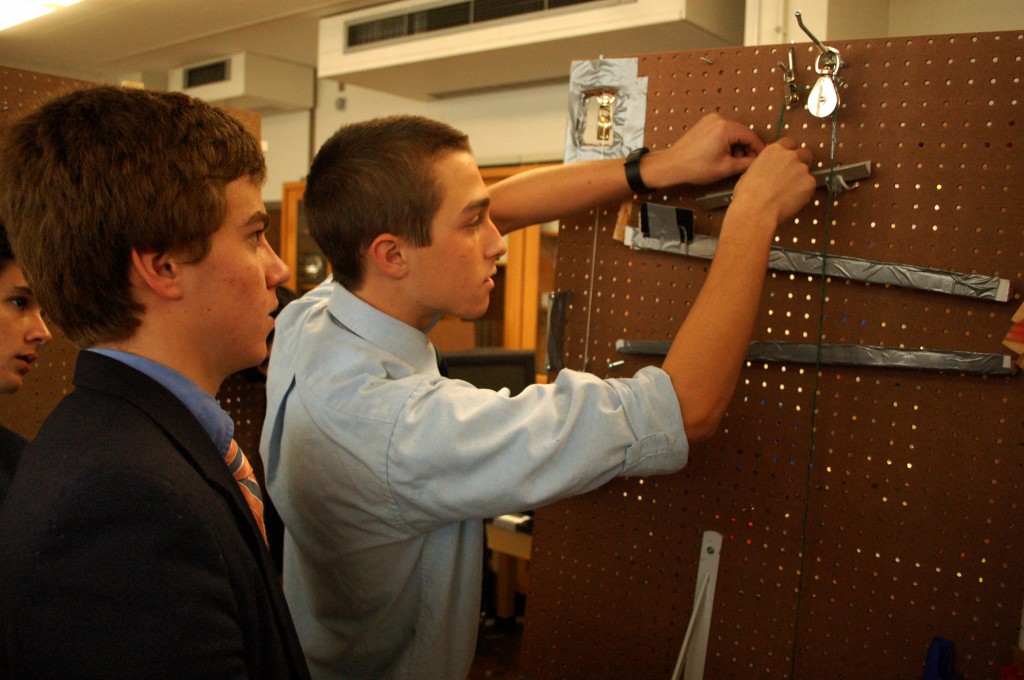 Having worked since the beginning of the second semester, the junior class of Jesuit has recently completed their Rube Goldberg project, one of the most important projects of the year. Rube Goldberg was an American cartoonist and inventor who gained popularity for his complex mechanisms that rendered simple results. The history of the Rube
Having worked since the beginning of the second semester, the junior class of Jesuit has recently completed their Rube Goldberg project, one of the most important projects of the year. Rube Goldberg was an American cartoonist and inventor who gained popularity for his complex mechanisms that rendered simple results. The history of the Rube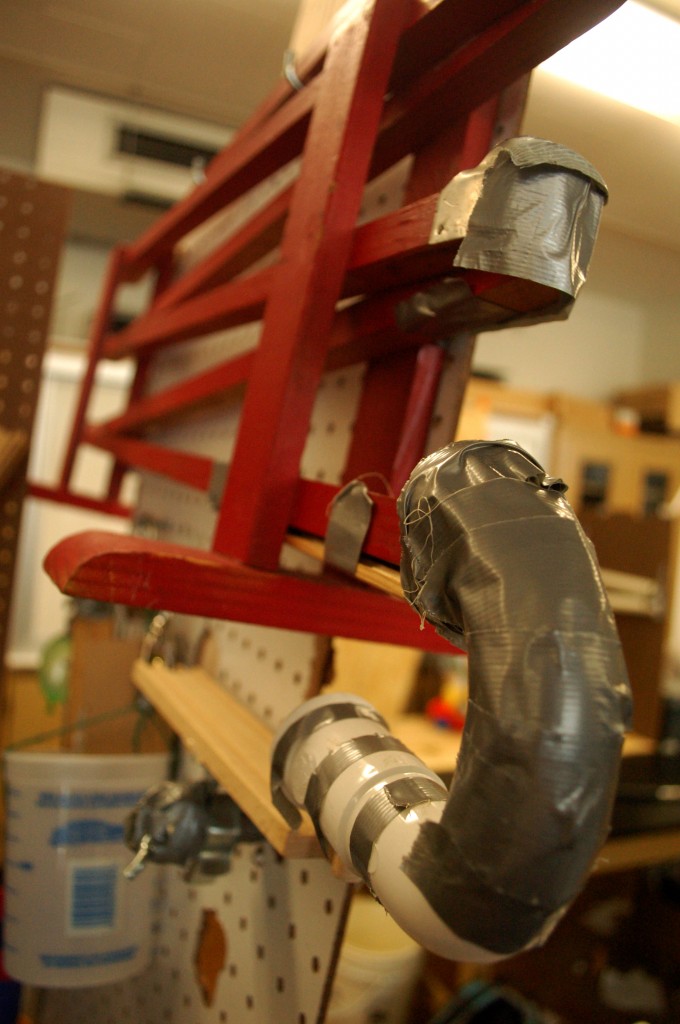 Goldberg project started four years ago when Mrs. Julie Carver proposed the challenge to raise, wave, and secure a flag. This year’s challenge was to build a mechanism that could achieve the most work, such as lifting a certain weight for a certain distance.
Goldberg project started four years ago when Mrs. Julie Carver proposed the challenge to raise, wave, and secure a flag. This year’s challenge was to build a mechanism that could achieve the most work, such as lifting a certain weight for a certain distance.
The work began in January 2011 when  the teachers introduced simple machines and explained how they multiplied the force. After familiarizing themselves with the machines used in a Rube Goldberg contraption, the students’ skills were put to the test when they completed a virtual Rube Goldberg in class with their teammates. Further developing their engineering skills, the students ran several detailed labs such as the “Simple Machine Labs,” “Pulley Lab,” “Incline Plane Lab,” “Muscle Up Lab,” and the “Mt. Everest Lab.” When the planning day arrives, students observe Rube Goldberg videos on YouTube to inspire and encourage creative ideas. Almost ready to begin construction of their machines, the teams prepare their materials and condense their ideas into one master plan, culminating with the presentations during the last week of the Rube Goldberg project, February 14-18.
the teachers introduced simple machines and explained how they multiplied the force. After familiarizing themselves with the machines used in a Rube Goldberg contraption, the students’ skills were put to the test when they completed a virtual Rube Goldberg in class with their teammates. Further developing their engineering skills, the students ran several detailed labs such as the “Simple Machine Labs,” “Pulley Lab,” “Incline Plane Lab,” “Muscle Up Lab,” and the “Mt. Everest Lab.” When the planning day arrives, students observe Rube Goldberg videos on YouTube to inspire and encourage creative ideas. Almost ready to begin construction of their machines, the teams prepare their materials and condense their ideas into one master plan, culminating with the presentations during the last week of the Rube Goldberg project, February 14-18.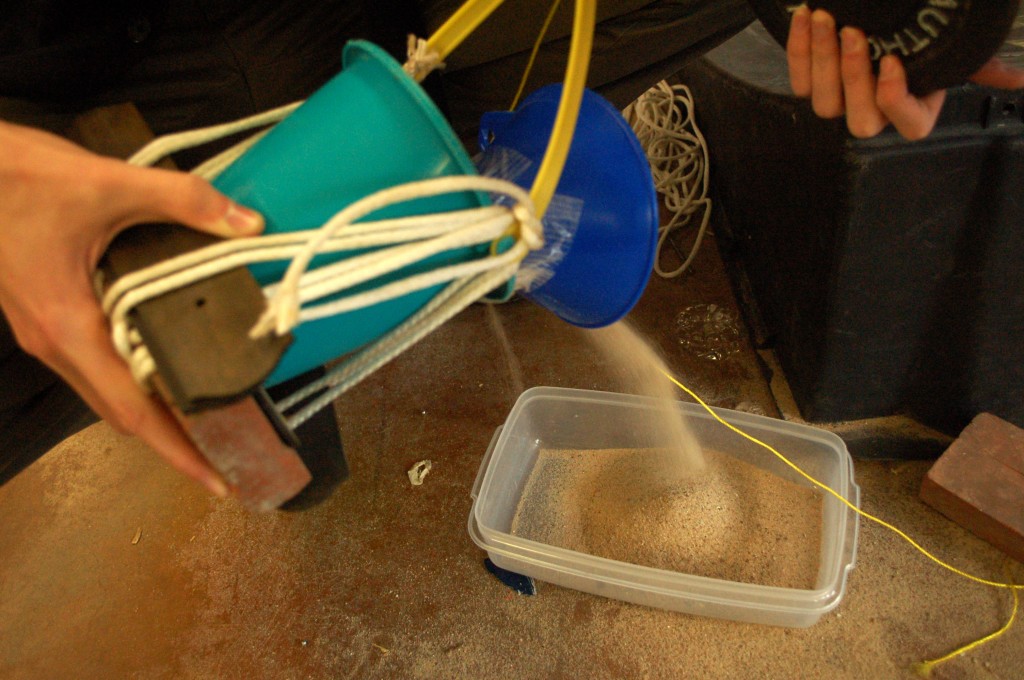
Identifying team dynamics, effort, and understanding of the concept, the Physics teachers (Mrs. Julie Carver, Ms. Catherine Clayton, Mr. Max von Schlehenreid, and Mr. Steve Rowley) graded the finished projects, noticing the variety of components used such as incline planes, PVC piping, funnels, buckets, and pulleys. Even though the Rube Goldberg project uses physics to accomplish large amounts of output work, the students’ engineering design skills are challenged as they strive for top prize. The top prize consists of the winning team’s names being announced at convocation, with the top four prizes awarding bonus points to the students. Any accomplishment is mentioned on the student’s application or transcript to college. According to Mrs. Carver, “If a student were able to successfully complete a Rube Goldberg project and accomplish the goal, then that is something truly amazing, and that is justified with a comment on his transcripts.”
With high expectations set for rising juniors, Mrs. Carver encourages effort and creativity in the Rube Goldberg project. Junior Ben Brownlee shared his thoughts of the project, advising rising juniors to, “Know the guidelines before you start and don’t put it off.” Reflecting on the amount of work spent planning and building the contraption, Brownlee said the best part of the project was, “seeing it all work at the end.” 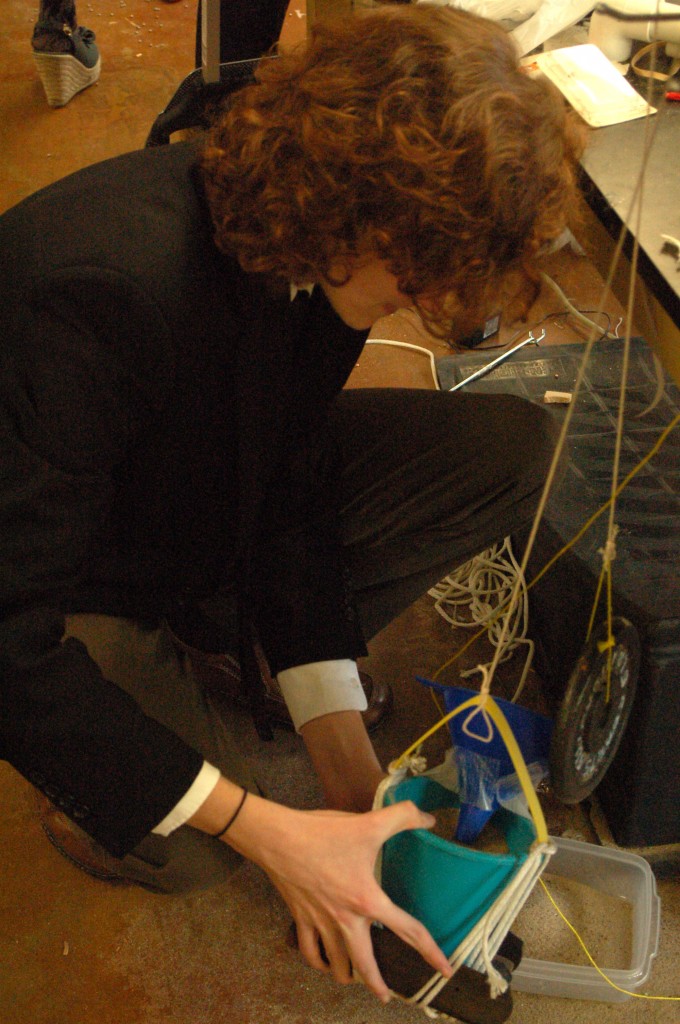 In the words of Rube Goldberg, “It just happened that the public happened to appreciate the satirical quality of these crazy things.” By these words, students find that a Rube Goldberg device isn’t about just completing a school project; rather, it is about displaying one’s creativity and willingness to find clever solutions to simple problems.
In the words of Rube Goldberg, “It just happened that the public happened to appreciate the satirical quality of these crazy things.” By these words, students find that a Rube Goldberg device isn’t about just completing a school project; rather, it is about displaying one’s creativity and willingness to find clever solutions to simple problems.
Photography by Jack White ’13


